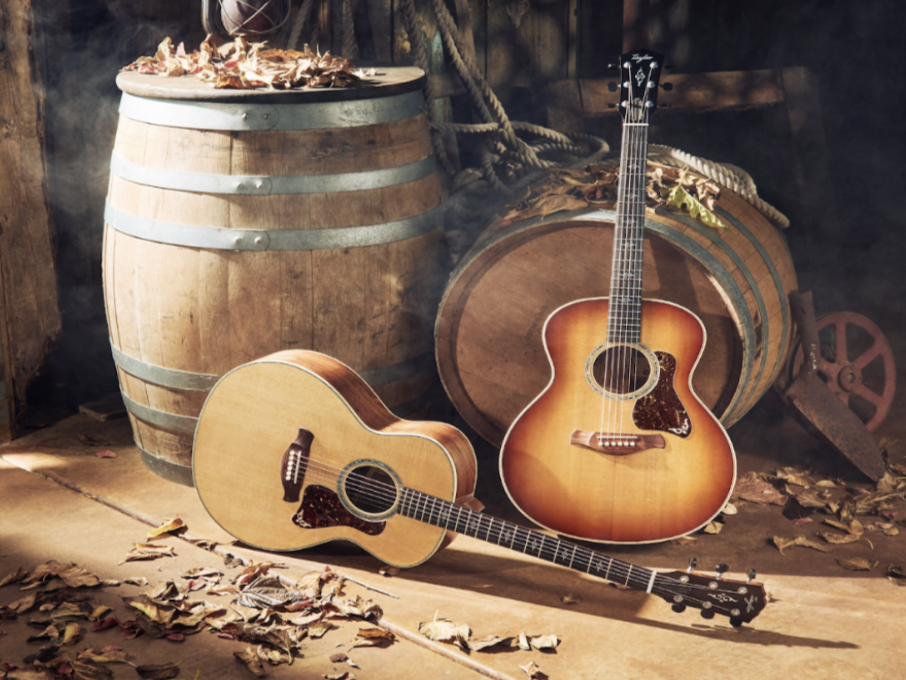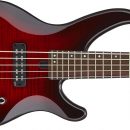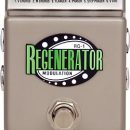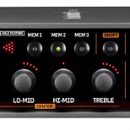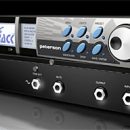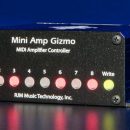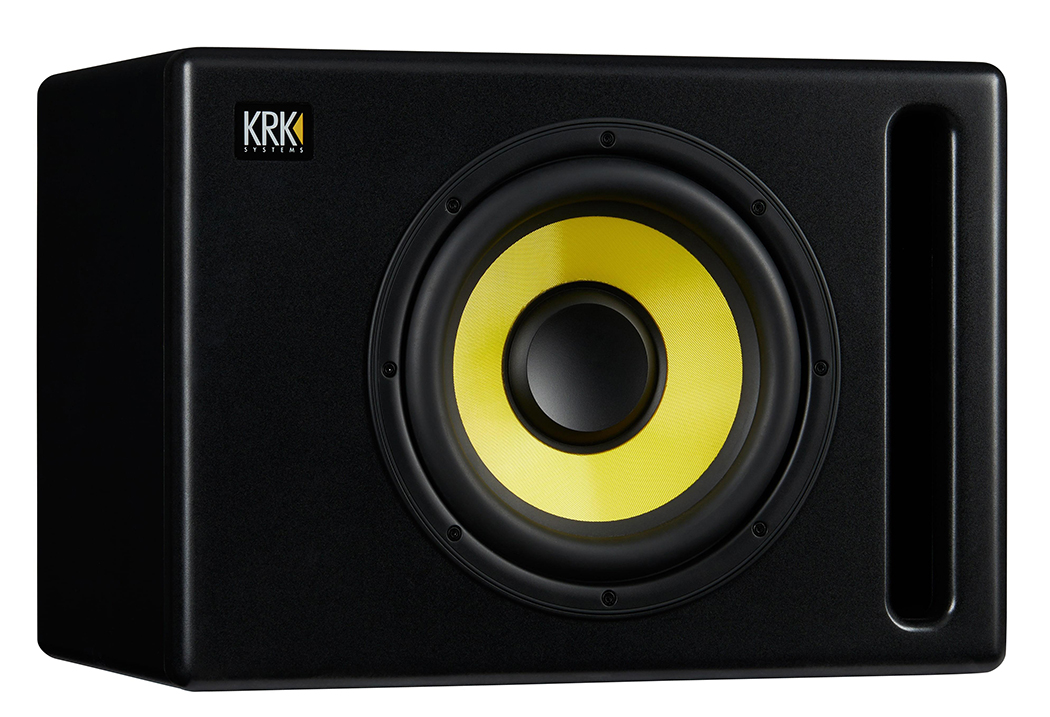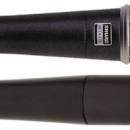Imagine Spinal Tap’s Nigel Tufnel extolling the virtues of this beautiful sounding acoustic guitar: “Twelve strings. That’s twice as many as a six strings. Not just twice as good, mind you, but it’s twice as loud!” While we wouldn’t agree with his theory on volume, we’d certain stand by his admiration for the sound quality. Once you play a 12-string guitar, it’s sometimes hard to find sonic pleasure in the 6-string variety, and if the 12-string in hand happens to be the Taylor T5 Custom 12-string with Cocobolo top, it might be hard to find pleasure in any other acoustic guitar.
| Category | Value | Rating |
| Features | 20% | |
| Usability | 25% | |
| Sound | 25% | |
| Documentation & Support | 10% | |
| Price | 20% | |
| OVERALL RATING = 3.4 3.6 stars or better: Outstanding, WIHO Award 3 stars or better: Worth considering 2 stars or better: Suited to specific needs 1 star or less: Not recommended |
||
Despite Taylor’s classification of the T5 as an electric guitar, we find these electro-acoustic guitars to be outstanding acoustic instruments — especially when amplified, and they also pull double-duty as electric guitars when needed, too. We loved the six-string T5 guitar when we compared electro-acoustic hybrid instruments previously (see that in-depth review here), and the 12-string version that we recently spent some time with easily carried on our love affair with this finely crafted instrument.
Whether plugged into a PA or layered in the mix of a recording, the Taylor T5 12-string sounds every bit as rich as a full-bodied acoustic 12-string, but it has the added benefit of playing as easily as any decent electric guitar, all the way up to the twelfth fret and beyond!
Although not as infinitely useful as the 6-string T5, which does double-duty as an electric guitar running through your amps and distortion boxes, 12-strings deliver a particular sound that is preferred in its acoustic tone much of the time. Still, you still get all of the pickup selections on this guitar as you would find on the 6-string T5.
If you’ve been looking for a pro-level 12-string for use on the stage or in the studio, Taylor hit another home run with this guitar. It plays like an electric, sounds like a premium12-string acoustic, and looks fantastic, too! All the other possible sonic uses for it are merely icing on the already scrumptious cake.
Features
 The Taylor T5 Custom was beauty to our eyes when we first reviewed the six-string version in our electro-acoustic roundup, and the 12-string version reviewed this month is equally as beautiful. This hollowbody thin-line (2.35” deep) electric guitar features a beautiful dark brown (with a hint of red) flamed Cocobolo top joined to a sapele body, and the sapele neck (1-11/16” nut width, 15” neck radius, and 24-7/8” scale) is topped with an ebony fretboard adorned with beautiful abalone inlays shaped like birds (or bats, or bull horns — we couldn’t reach a consensus other than the inlays were really sharp looking. Taylor informs us this is called the Artist inlay). There are two strap pegs on the butt of the guitar.
The Taylor T5 Custom was beauty to our eyes when we first reviewed the six-string version in our electro-acoustic roundup, and the 12-string version reviewed this month is equally as beautiful. This hollowbody thin-line (2.35” deep) electric guitar features a beautiful dark brown (with a hint of red) flamed Cocobolo top joined to a sapele body, and the sapele neck (1-11/16” nut width, 15” neck radius, and 24-7/8” scale) is topped with an ebony fretboard adorned with beautiful abalone inlays shaped like birds (or bats, or bull horns — we couldn’t reach a consensus other than the inlays were really sharp looking. Taylor informs us this is called the Artist inlay). There are two strap pegs on the butt of the guitar.
Cocobolo is a dense, tropical hardwood similar to Koa but with a slightly deeper low end — in this case, the T5 12-string uses Mexican Cocobolo wood on top.
The T5 12-string, as with its 6-string siblings, features Taylor’s single-bolt T-lock neck design, which allows for easy angle adjustment and a perfectly aligned fit with the body, and the guitar ships with a set of light gauge Elixir strings.
In our minds (and hands), we consider this an acoustic guitar first and foremost, but perhaps the lack of piezo acoustic pickups is what leads Taylor to categorize it as an electric guitar (or maybe it’s because when you look at Taylor’s gorgeous traditional acoustics you realize that you need another name to describe the T5).
Custom Taylor magnetic humbucking pickups — one visible at the bridge and one hidden at the neck, are combined with a body sensor inside the guitar’s top surface to generate both the T5’s electric and acoustic tones.
The T5 12-string has a custom developed bridge saddle. The Dual Compensated Saddle realigns the individual string height in such a way as to keep the fundamental strings and octave strings in the same physical plane as one another for more precise playing. Since many of the strings in a 12-string set have a lower gauge than the fundamental strings (compare the thickness of the low E, A, and D strings with their paired fundamental strings, for example), typical 12-string guitars have slightly uneven string height from the first to the twelfth string. The Taylor design eliminates this problem and presents your picking hand with a leveled string surface.
Controls on the face of the guitar include both Bass and Treble EQ controls (with center detents) and a master volume, while a five-way pickup selector switch is located on the top of the instrument. Functionally, the guitar is the same as six-string T5s, with or without the exotic wood top and fancy abalone inlays.
Using the five-way selector, you choose various combinations of the pickups to generate specific types of tones ranging from purely acoustic to purely electric, with some hybrid sounds in the in-between settings.
Output from the T5 is mono-only. We would love the option to route the acoustic tone through one output to a PA or acoustic guitar amp while sending the electric guitar humbucker output to a guitar amp through a second output, but the design doesn’t separate the use of the pickups like guitars with dedicated piezo pickups for acoustic tones and magnetic pickups for electric tones — humbuckers are used for both acoustic and electric tones. For the singer/songwriter who typically needs one particular guitar sound for a given song, this won’t be a concern. And in the case of the 12-string T5 (compared with standard T5 models), it will most likely only be played as an acoustic 12-string guitar.
Usability
The Taylor T5 12-string is a dream to play — in fact, it’s one of the finest playing 12-strings we’ve had the privilege of playing ever! From the first fret to past the twelfth, fretting chords was comparable to playing an electric guitar — a feat not easily achieved on 12-string acoustic guitars. The fast-playing neck was comfortable and smooth, and we could play lead lines as easily as with a true electric 12-string.
The Dual Compensated Saddle is no doubt responsible for playing (at least) a small part in the guitar’s ease of playability. As with Taylor’s single-bolt T-lock neck design, it’s attention to detail at the smallest level that adds up to making these guitars play the way they do.
The Taylor T5 has independent Bass and Treble controls, and happily, the flat, rubber-coated knobs on the face of the guitar featured center detents with boost and cut capabilities surrounding the center position. The design keeps the buttons out of the way from accidental adjustment — we never accidentally moved their settings while playing.
Unfortunately, the pickup selection is something that Taylor didn’t get right in our book. To electric guitar players like us, there was nothing intuitive that indicated what kinds of tones could be achieved from different positions along the five-way switch. It was not analogous to a five-way pickup selection switch on a typical Strat-type guitar other than in its first position.
For example, the first (neck) position is the most acoustic-like, while position #2 turns Off the body sensor and uses the hidden neck pickup for a different electric tone. The middle position #3 featured the bridge humbucker (typically the down-most position on a five-way electric guitar switch), position #4 had both pickups in parallel wiring, while position #5 had the pickups in series.
Effective use of the various settings required committing to memory what each setting offered, or a constant review of the selection list printed on the back of a demo CD included with the guitar (or a reference card also packaged in the case). It would have been more convenient to be able to instinctively flip the five-way pickup selector from pure acoustic at one end to rockin’ bridge pickup electric at the other without having to pay careful attention to finding position #3 in the middle.
Sound
The Taylor T5 12-string is pristine in its tone — it’s really hard not to love the sound of this guitar. A listener would easily think they were listening to a traditional acoustic 12-string. In fact, we used it on a recording session where we needed a bit of twelve-string magic — not even the producer or engineer questioned what kind of an instrument generated our beautiful Taylor tone.
All notes had a sharp attack to them that you’d expect to hear from a quality electric guitar — which is all the more fun when you find yourself using this as an acoustic instrument. The guitar’s electronics were particularly sensitive to how heavy or light we picked while playing, capturing the subtle nuances in our playing.
Whether playing through various guitar amps or through a PA system, the Taylor T5 12-string delivered genuine acoustic tone and a somewhat useful range of electric guitar tones. We say somewhat because the sound of a 12-string is fairly singular in its application, and although this guitar features all the tonal options found in the T5 6-string, there just isn’t much use for all that choice!
The T5 12-string isn’t as well suited to playing through overdriven amp channels as the 6-string version, but you can! We ran it through a high-gain Mesa/Boogie amplifier (because we’re a little crazy sometimes) and kicked out some hard rock riffs, but of course twelve strings make for a cluttered tone that works in a pinch. We’ll stick to the T5 6-string for playing most non-acoustic guitar parts.
High gain shredding is certainly not what this (or any 12-string) guitar is about. But in a more practical application of gain, adding just a tiny bit of overdrive enabled us to play some cool 12-string lead lines reminiscent of Trevor Rabin’s days in the band Yes. We had just as much fun without the overdrive, adding some chorus and delay to unleash our inner ‘80s guitar child.
We appreciated that the tone controls (Bass and Treble) changed the color of our sound without affecting the gain. Unfortunately, what we didn’t love was the noise on the Treble control. When boosting the high end on our T5 beyond “subtle,” the EQ added a significant amount of noise that we found unpleasant. It’s best to let your amp or mixing board shape the high frequencies instead, though we found the Bass control very useful in bringing out fullness of sound when needed.
Overall it was a pleasure to play the T5 12-string. It is an exceptional 12-string that sounds beautiful for anyone in need of an amplified 12-string guitar, and it maintains all the playability of an electric guitar. For sitting around the campfire, though, this T5 didn’t seem to be quite as loud as the 6-string version, though playing unplugged in your apartment will render nice tone without waking the neighbors. To really appreciate the character of its tone, though, this guitar sounds best amplified.
Documentation and Product Support
The Taylor T5 12-string came with a tutorial CD, on the back of which was printed a summary of the pickup selection settings (that we had to refer to regularly), along with a small reference card that also listed the pickup positions.
The unintuitive nature of the five-way pickup selector (as it relates to acoustic vs. electric tones) was annoying, but the DVD did a great job illustrating use of the instrument and its numerous tonal options.
Price
The T5 Custom 12-string T5C2-12 (MSRP $3,798) doesn’t come cheap, though if you don’t lust after the beautiful Cocobolo top, you can save over $1,000 on a T5 with a traditional spruce or maple top. Traditional, round abalone dots on the neck will save you even more (though your guitar will lack the panache of the Artist inlays), and you’ll still get the fantastic playability and tone. We found different versions of this guitar (based on standard/custom and different wood tops) ranging from $2,100 to $3,700 at retail.
No matter which version of the T5 12-string you acquire, we have always found Taylor’s pricing to be appropriate for the particular instrument.
Contact Information
Taylor Guitars
www.taylorelectricguitars.com
| Evaluation Short-List |
|






